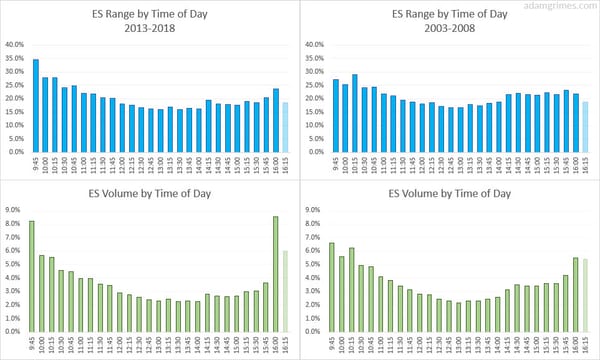It's not what you think

I've been in this business for about two decades, and I've seen some... let's say... "stuff". One of the most interesting things is that everyone, in developing their process or system, tends to focus attention on the wrong things; part of the learning curve is simply learning where we should focus our limited time and attention! I think this says something about human nature and the nature of the market, but one of the most consistent ways people mis-place emphasis is by focusing on entry techniques. In most cases, your success will depend far more on everything else you do than on where and how you get into a market.
Everywhere you turn, we are flooded with "ideas"--the television, blogs, newspapers, social media--everyone is focused on what stock to buy and where to buy it. There are passionate and often well-reasoned thoughts behind these ideas, but much of the discussion is focused on digging deeper into why the idea might be right. Most technical tools and indicators are designed to show you when it might be the right time to get into a trade. Many segments of the industry have a vested interest in creating volume, so the flow of information is slightly tweaked and slanted to get you to do something.
When someone first comes to financial markets, it's natural to want to know where to buy or short something, to want to know when something is going to go up or down. Over time, most traders begin to realize that everything else matters a lot too. What is "everything else"? Here's a short (and partial) list of things worthy of your focus and attention:
- How much to buy or sell. Position sizing is critical. Make one mistake here and you could be out of business.
- What you do after you get into the trade, or trade management. I'd argue that position management is responsible for more of your results than entry techniques. It's also a much more complicated subject, and a lot less sexy. It's easy for me to write a blog telling you why you should buy a stock or short a currency, but once you're into the trade complexity multiplies. Every moment is an opportunity to make many decisions: do you add to the trade? Get out? Tighten stop? Where is your initial stop? Is it for full or partial position? Will you ever widen the stop? Take partial profit? Reduce the trade at a loss? Plan to add to the trade at a later time? Hedge the trade? The list goes on and on.
- Discipline. You must be consistent. The market is very random, and your results will have a wide degree of variability. The only defense you have is to be as consistent as you can in your behavior.
- Process. What do you do and how do you do it? Who are you, as a trader? How does trading fit into your professional and personal life? All of these are questions that are addressed in your process, and you better have one.
The list could go on and on, but I would challenge you to think about where you put your time and attention. How much of your focus is on ideas for trade entry? How much time do you spend thinking about everything else, and what can you improve? Sometimes very small adjustments can make a big difference.
It's not what you think: most people think trading is about having great ideas and great reasons for those ideas. I'd argue that everything else--everything that people talk about so little--those are the things that really matter. Those are the things that are going to create your success, and ensure a long and enduring career in the market. Where is your focus?



